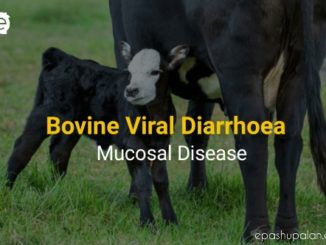The ethical issues over the experimental use of higher model vertebrates like guinea pig, rats, dogs, monkeys etc. have resulted in the use of invertebrates and micro-organisms as one of the living systems alternatives to laboratory animal use particularly in biomedical and behavioural research. Invertebrates and micro organisms are being used in animal testing although they are not safeguarded under animal testing regulations in most countries. Thus the typical stringent record keeping and statistical aspects of animal testing use may not apply to invertebrates and microorganisms strictly.
INVERTEBRATES
As a result of the public concerns about the use of vertebrate animals in research., invertebrates are being evaluated and recognized as models for many diseases and conditions. Their use has led to discoveries in almost every area of biology and medicine from embryonic development to aging processes. Invertebrates body structure is much less similar to humans than is vertebrate body structure, invertebrate anatomy, physiology, and biochemistry offer avenues for new approaches that have been only partially explored. Invertebrates have an undeveloped organ system and do not have the adaptive immune system, which poses some limitations for their use in human diseases. However, they hold numerous benefits, such as a brief life cycle, small size and simple anatomy, so that a large number of invertebrates can be studied in a single experiment within a short period with less ethical problems. Their cost of housing is less compared to the animals.
Caenorhabditis elegans: is a eukaryotic multi cellular nematode, 1 mm in length with a very short generation time. It is transparent, genetically amenable with complete life cycle in about 2– 3 weeks. Life cycle proceeds through various complex developmental stages like embryogenesis, morphogenesis and growth to an adult. Information obtained from the research study can be applicable to more complex organisms like humans. As a model, it has been used to study various neurological disorders like Parkinson’s disease, Alzheimer’s diseases; various immune disorders as well as cancer and diabetes.
Drosophila melanogaster:: known as fruit fly is one of the most widely studied invertebrates in research Nearly 75% of the genes involved in human diseases are believed to have a functional homolog in the fly. It requires extremely low cost of maintenance, propagation and screening as compared to the other mammal based models. It also produces the results very rapidly due to a short life cycle. Fruit fly possesses four stages in life cycle – the embryo, the larva, the pupa and the adult. Each stage of fly has its own advantage, hence considered as a multiple model organism to study the various concepts.
The embryo is frequently used to study the neuronal development and, organogenesis, fundamental developments and to examine pattern formation. The larva is used to study the physiological and developmental processes . The brain of the adult fly is thought to mediate various complex behaviors like circadian rhythms, learning and memory, feeding, sleep, courtship, aggression, grooming and flight navigation. Due to many similarities in development and behavioral activities, fruit fly served as a unique and sensitive model for the study of human genetics and diseases. Fruit fly serves as an important tool to investigate neuro-degenerative diseases like Alzheimer’s and Parkinson’s disease.
Other terrestrial invertebrates used in many disciplines of biomedical research include flies, bees, earthworms, and leeches in various aspects of anatomy, physiology, and biochemistry Ants and bees are also being used in vision research recently. Age related metabolic changes in other insects are being investigated for possible use in aging research
MICROORGANISMS
The advantages of using micro-organisms in biomedical research include: rapid reproduction at body temperature; rapid division (every 20 to 30 minutes) making them useful for short term studies; multi-generational studies and they are inexpensive in terms of storage, upkeep, and maintenance.
Salmonella typhimurium: bacteria used in mechanistic studies in genetics as well as the Ames mutagenicity/carcinogenicity test.
Escherichia coli: bacteria used by developmental biologists to derive theories of gene control and by molecular biologists in recombinant DNA research.
Streptococcus mutans: bacteria, used in dental research on the metabolic activity of plaque.
Tetrahymena pyriformis: a ciliate protozoan being used to study the effects of anesthetics on metabolism and a host of microscopic protozoans, metazoans, and rotifers used to investigate the physiology and biochemistry of photo-reception and vision.
Saccharomyces cerevisiae: known as brewing yeast, the most popular and important model organism due to its rapid growth, ease of replica plating and mutant isolation, dispersed cells, well defined genetic system and highly versatile DNA transformation system. Yeasts can be grown in solid or liquid culture and isolated as colonies derived from a single cell on solid media. The generation time is about 90 min, with being easier to grow a large population and analyze the process. The numerous membrane-bound organelles like nucleus, peroxisome, mitochondria and the organelles of secretary pathway also have shown to mimic the functions of mammalian cells. This yeast could be used to understand programmed cell death, cell death regulators in humans and thought to be useful in cancer research.
References
Gilbert, L.I., 2008. Drosophila is an inclusive model for human diseases, growth and development. Molecular and . Cell Endocrinology. (293): 25– 31.
Mell, J.C. and Burgess, S.M., 2002. Yeast as a model genetic organism. In: Encyclopedia of Life Sciences. Mcmillan Publishers Ltd.
Pereira, C., Bessa, C., Soares, J., Leao, M. and Saraiva, L., 2012. Contribution of yeast models to neurodegeneration research. J. Biomed. Biotech.. http://dx.doi.org/10.1155/2012/ 941232.
Sonali K. Doke and Shashikant C. Dhawale 2015. Alternatives to animal testing. Saudi Pharmaceutical Journal (23): 223–229.
Wilson-Sanders, S.E., 2011. Invertebrate models for biomedical research, testing, and education. Institute for Laboratory Animal Research Journal. (52): 126–152.






Be the first to comment